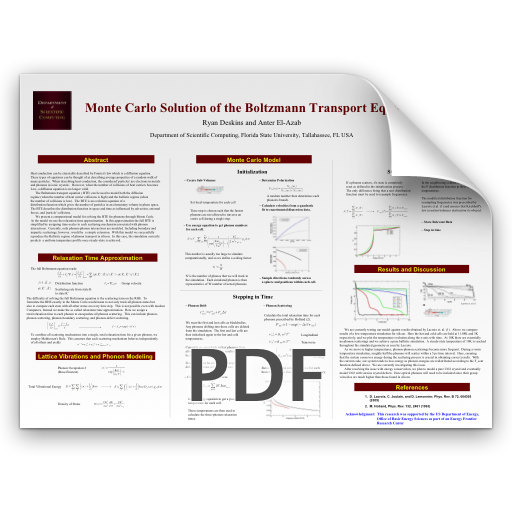
Monte Carlo Solution of the Boltzmann Transport Equation
Abstract
Heat conduction can be classically described by Fourier's law which is a diffusion equation. These types of equations can be thought of as describing average properties of a random walk of many particles. When describing heat conduction, the considered 'particles' are electrons in metals and phonons in ionic crystals.. However, when the number of collisions of heat carriers becomes Low, a diffusion equation is no longer valid.
The Boltzmann transport equation ( BTE) can be used to model both the diffusion regime (when the number of heat carrier collisions is high) and the ballistic regime (when the number of collisions is low). The BTE is an evolution equation of a distribution function which gives the number of particles in an elementary volume in phase space. The BTE describes the distribution function in space and time as influenced by advection, external forces, and 'particle' collisions.
We present a computational model for solving the BTE for phonons through Monte Carlo. In the model we use the relaxation time approximation. In this approximation the full BTE is simplified by assigning time-scales to each scattering mechanism associated with phonon interactions. Currently, only phonon-phonon interactions are modeled. Including boundary and impurity scatterings, however, would be a simple extension. With this model we successfully reproduce the Ballistic regime of phonon transport in silicon. In this case, the simulation correctly predicts a uniform temperature profile once steady-state is achieved.

